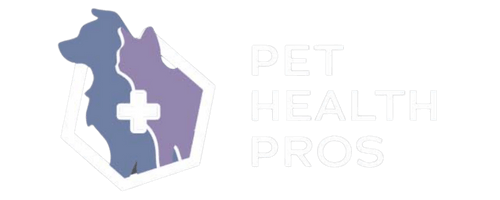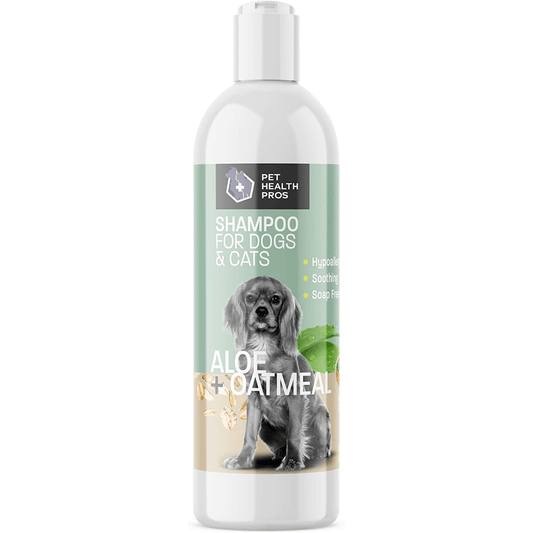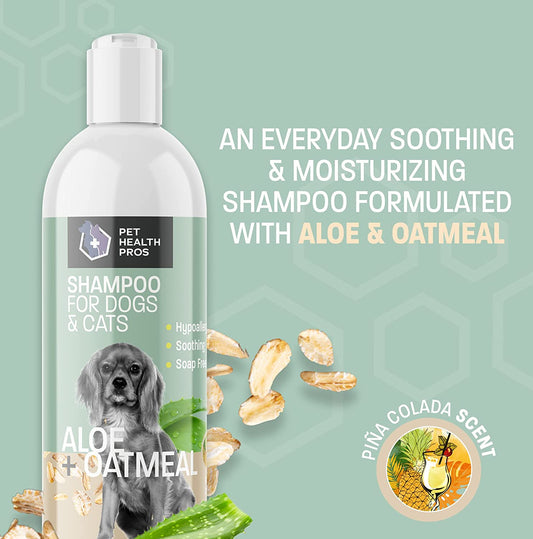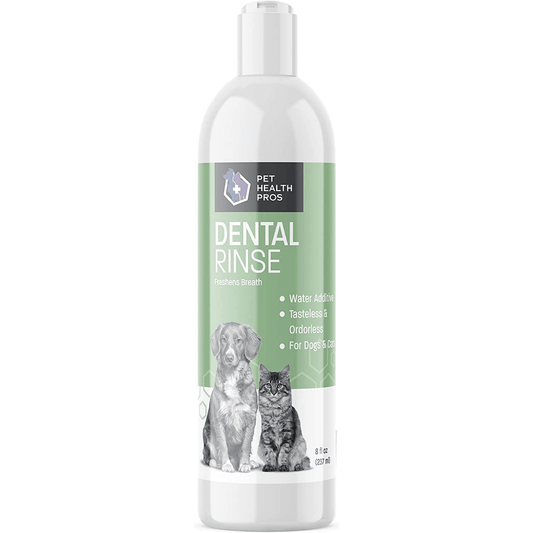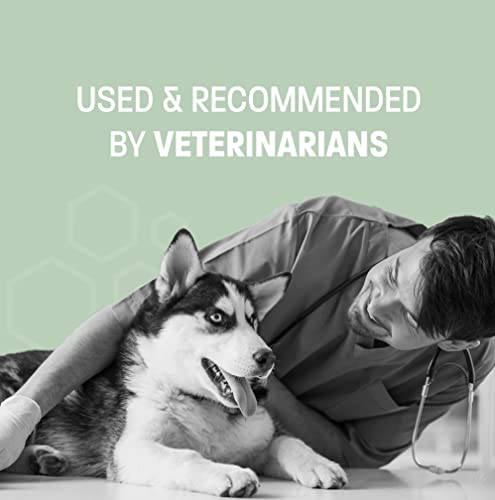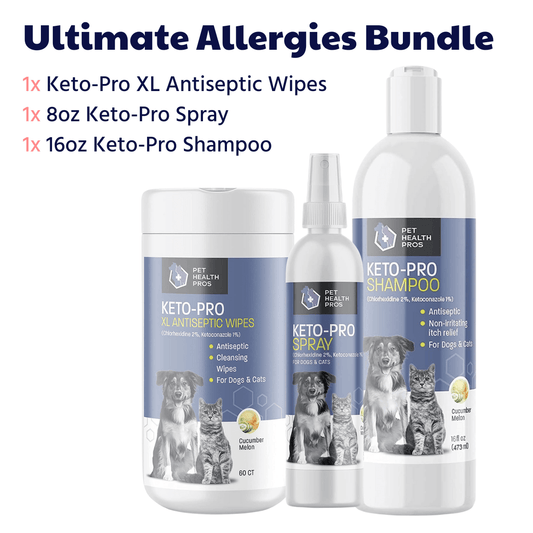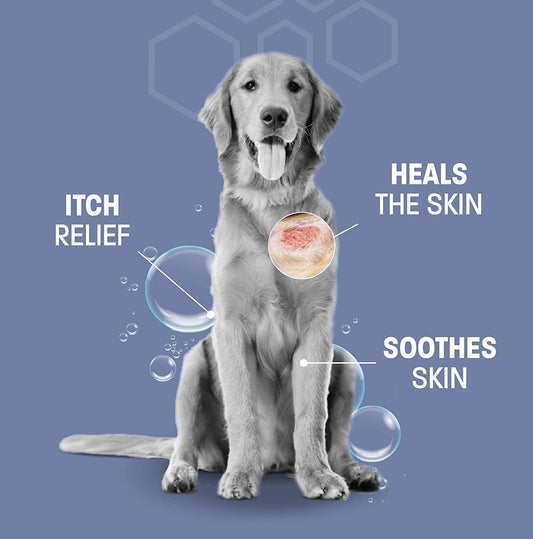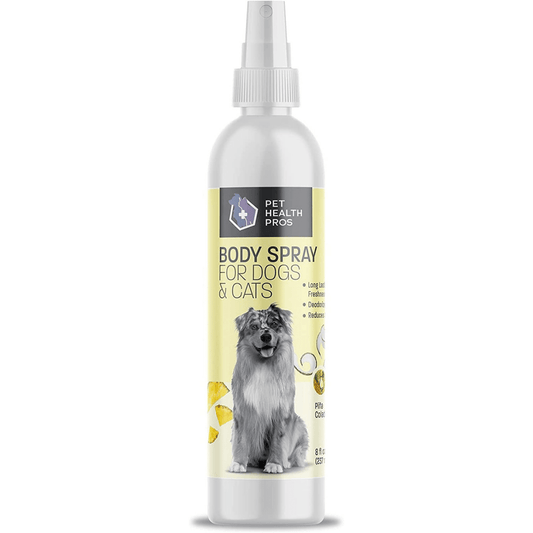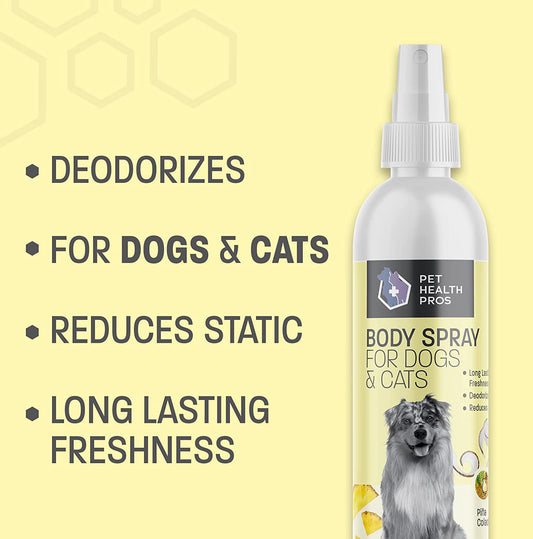When a dog's anal gland ruptures, it can be a distressing situation for both the pet and the owner. Understanding how to promptly and effectively respond to this emergency is crucial for your dog's health and comfort. This article, brought to you by Pet Health Pros, a U.S.-based company with over fifty years of combined experience in veterinary medicine and animal health management, provides a comprehensive guide on dealing with anal gland issues in dogs. Our expertly crafted advice, in line with our commitment to 'Healthier Pets, Happier Lives,' will ensure you're equipped to support your furry friend's recovery and well-being.
Key Takeaways
- Recognize the signs of anal gland rupture in dogs, such as swelling, pain, and discharge, and assess the severity to determine if immediate veterinary care is needed.
- Apply first aid measures at home, like cleaning the affected area with warm water and applying a cold compress, while avoiding any invasive procedures.
- Understand the importance of professional veterinary care, including potential surgical treatments, and follow through with post-treatment care for optimal recovery.
- Implement preventative measures to maintain anal gland health, including proper diet, routine check-ups, and recognizing early warning signs to avoid future complications.
- Support your dog's recovery with the right health supplies from Pet Health Pros, ensuring a comfortable environment and ongoing care tailored to your dog's needs.
Understanding Anal Gland Issues in Dogs
The Function of Anal Glands
The anal glands, or anal sacs, are small glands located on either side of a dog's anus. They play a crucial role in canine communication by producing a unique scent that dogs use to mark territory and identify one another. Each gland secretes a strong, foul-smelling liquid that is typically expressed naturally when a dog defecates.
However, these glands can sometimes become problematic, leading to discomfort or health issues for your pet. It's important for dog owners to understand the basic function of these glands to better recognize when there might be a problem.
The sacs are lined with sebaceous glands and they produce a strong, foul-smelling liquid that dogs use to mark territory and communicate with other dogs in the ...
Common issues with anal glands include impaction, infection, and abscesses, which can be painful and may require veterinary attention. Recognizing the signs of these problems early can help prevent more serious complications such as anal gland rupture.
Common Problems and Complications
Anal glands in dogs are prone to several issues that can lead to discomfort and health complications. Impaction is a common problem where the glands become clogged and unable to empty. This can progress to an infection or abscess, which is painful and may cause systemic illness. In severe cases, the gland can rupture, leading to an urgent medical situation.
Inflammation and infection of the anal glands are often recurring issues in some dogs, which can lead to chronic discomfort and the need for repeated veterinary visits. Below is a list of common complications associated with anal gland issues:
- Impaction
- Infection
- Abscess formation
- Perianal fistulas
- Chronic discomfort
- Rupture
Early detection and treatment are crucial in preventing these complications from escalating into more serious conditions. Regular check-ups and monitoring of your dog's anal gland health can help identify problems before they become severe.
Signs of an Anal Gland Rupture
Recognizing the signs of an anal gland rupture in your dog is crucial for timely and effective treatment. A rupture may manifest through visible signs such as swelling or an open wound near the anus. Dogs may also exhibit behavioral changes indicating discomfort, such as excessive licking or scooting their rear on the ground.
Symptoms of an anal gland rupture can vary but often include:
- Sudden onset of pain
- Swelling or a lump near the anal area
- Pus or blood draining from the anal area
- Foul-smelling discharge
- Difficulty defecating
- Noticeable discomfort when sitting or moving
It is essential to monitor your dog closely for these symptoms, as an anal gland rupture can lead to serious infections if not addressed promptly.
If you observe any of these signs, it is important to take immediate action to prevent further complications. While some issues may be resolved with conservative management, others may require urgent veterinary attention.
Immediate Actions to Take for an Anal Gland Rupture
Assessing the Severity of the Situation
When you suspect your dog's anal gland has ruptured, it's crucial to assess the severity of the situation promptly. A ruptured anal gland can range from a minor tear to a severe infection that may require immediate veterinary attention. Start by examining the area around your dog's anus for signs of swelling, redness, or discharge. If you notice a foul-smelling odor or pus, this could indicate an infection.
Symptoms of a ruptured anal gland in dogs may include:
- Excessive licking or biting at the anal area
- Visible swelling or an open wound near the anus
- Difficulty sitting or signs of discomfort
- Bloody or purulent discharge
It's important to keep calm and avoid causing additional stress to your dog during this assessment. Gentle handling and a soothing voice can help keep your pet as comfortable as possible.
If the rupture is minor and your dog is not in significant distress, you may be able to provide first aid at home. However, if the rupture appears severe, or if your dog is in pain, lethargic, or showing signs of systemic illness, seek emergency veterinary care immediately. Remember, a ruptured anal gland can lead to serious complications if not treated promptly.
First Aid Measures at Home
If you suspect your dog's anal gland has ruptured, it's crucial to take immediate and appropriate action at home before you can get to a veterinarian. Keep your dog calm and restrict their movement to prevent further injury or contamination. Gently clean the affected area with warm water and mild antiseptic soap to reduce the risk of infection.
After cleaning, apply a cold compress to the area to help reduce swelling and discomfort. It's important to avoid using any strong disinfectants or irritants that could exacerbate the situation. If your dog allows, you can place an Elizabethan collar (E-collar) to prevent them from licking or biting the wound, which can cause further irritation or infection.
Remember, these first aid measures are not a substitute for professional veterinary care. They are meant to manage the situation until you can seek medical attention.
Here is a simple list of items to have on hand for such emergencies:
- Mild antiseptic soap
- Clean towels or cloths
- Cold compress or ice pack
- Elizabethan collar (E-collar)
- Emergency contact number for your veterinarian
When to Seek Emergency Veterinary Care
Recognizing when to seek emergency veterinary care is crucial for your dog's health and can be the difference between a full recovery and serious complications. If your dog's anal gland ruptures, immediate veterinary attention is necessary. Symptoms such as severe pain, bleeding, or signs of infection (e.g., fever, lethargy, loss of appetite) indicate that professional care is needed without delay.
Emergency veterinary care should be sought in the following situations:
- Your dog appears to be in extreme pain or distress.
- There is significant bleeding or discharge from the anal area.
- Signs of infection are present, such as swelling, redness, or a foul odor.
- Your dog is lethargic, refusing to eat, or showing other signs of illness.
It is essential to keep your dog calm and comfortable while you arrange for transportation to the veterinary clinic. Avoid any unnecessary stress or movement that could exacerbate the injury.
Prompt action can prevent further damage and ensure the best possible outcome for your dog. Remember, anal gland issues can be painful and distressing, so compassionate care and swift decision-making are key.
Professional Care and Treatment Options
Veterinary Diagnosis Procedures
Once you suspect an anal gland rupture in your dog, a visit to the veterinarian is crucial for an accurate diagnosis. The vet will perform a thorough physical examination, which may include palpating the anal area to assess for swelling, pain, or discharge. Additionally, the vet might recommend diagnostic tests such as:
- A cytology test to examine the cells in the discharge
- Blood tests to check for infection or underlying health issues
- Imaging studies like X-rays or ultrasounds if an abscess or deeper issue is suspected
These tests help determine the extent of the damage and the presence of infection. It's important to remember that timely veterinary care can prevent further complications and ensure a better outcome for your dog.
Early detection and diagnosis are key to managing anal gland issues effectively. If you notice any signs of discomfort or changes in your dog's behavior, do not hesitate to contact your vet for immediate care.
Remember, certain health signs in dogs, such as changes in appetite, vomiting/diarrhea, lethargy, or difficulty breathing, warrant a vet visit. These symptoms can indicate serious health problems beyond anal gland issues.
Surgical and Non-Surgical Treatments
When an anal gland rupture occurs, treatment options vary depending on the severity and underlying cause of the condition. Non-surgical treatments may include antibiotics to combat infection and anti-inflammatory medications to reduce swelling and discomfort. These are often the first line of defense, especially in less severe cases.
For more serious or recurrent issues, surgical intervention may be necessary. This can involve the removal of the affected anal gland, a procedure known as anal sacculectomy. Post-surgical care is crucial to ensure proper healing and prevent complications.
It is essential to follow your veterinarian's instructions for post-treatment care, which may include administering medication, applying topical treatments, and monitoring the site for signs of infection.
Dietary changes and supplements may also be recommended to support the healing process and prevent future problems. Regular follow-up visits with your veterinarian will help to monitor your dog's recovery and adjust treatment as needed.
Post-Treatment Care and Monitoring
After your dog has undergone treatment for an anal gland rupture, close monitoring and proper care are crucial to ensure a full recovery. It's important to follow your veterinarian's instructions, which may include administering medications such as antibiotics or pain relievers.
Consistency in post-treatment care is key. You should regularly check the site of the rupture for signs of infection or delayed healing. Any changes in your dog's behavior, appetite, or bathroom habits should be reported to your vet immediately.
- Ensure the wound area is kept clean and dry
- Prevent your dog from licking or biting the affected area
- Schedule follow-up appointments for progress checks
During the recovery period, it's essential to provide a calm and comfortable environment for your dog. Limit their physical activity as advised and give them plenty of opportunities to rest.
Remember, with proper treatment, your dog can heal in no time. Whether dogs have anal gland abscesses, anal glands rupture, or even tumors, proper medication and attentive care will lead to a healthier and happier pet.
Prevention and Long-Term Management
Diet and Nutrition for Anal Gland Health
A balanced diet is crucial for maintaining your dog's anal gland health. High-fiber foods can help ensure proper stool consistency, which aids in the natural expression of the anal glands during defecation. Consider incorporating sources of fiber such as pumpkin or specially formulated dog foods that support digestive health.
Ensuring your dog stays hydrated is also essential, as it can help prevent constipation, which may lead to anal gland issues.
Here are some dietary components to consider for anal gland health:
- Fiber: Aids in creating bulkier stools, which can help express the glands.
- Probiotics: Supports a healthy gut microbiome, which is important for overall digestive health.
- Omega-3 Fatty Acids: Can reduce inflammation and support skin and coat health.
Always consult with your veterinarian before making significant changes to your dog's diet, especially if your dog has a history of anal gland problems. They can provide personalized advice and may recommend specific supplements or foods that are beneficial for your dog's unique needs.
Routine Expressions and Check-Ups
Regular maintenance of your dog's anal glands is crucial for preventing issues such as impaction, infection, and rupture. Routine expressions should be performed by a professional groomer or veterinarian, especially if you are not familiar with the correct technique. During these check-ups, the professional will assess the glands for any abnormalities and ensure they are expressed properly.
Anal gland expressions are typically recommended every 4-6 weeks, but this can vary depending on the individual dog's needs. Dogs with a history of anal gland problems may require more frequent attention. It's important to establish a schedule that aligns with your dog's health requirements.
Keeping a record of your dog's anal gland expressions can help you monitor their health and identify any patterns or recurring issues.
If you choose to learn how to express your dog's anal glands at home, ensure you receive proper instruction from a veterinarian. Remember, incorrect expression can cause discomfort or further complications for your dog.
Recognizing Early Warning Signs
Being proactive in recognizing the early warning signs of anal gland issues can be crucial for your dog's health. Early detection can prevent complications such as infections or ruptures. Look for signs such as your dog scooting their rear on the ground, licking or biting at the anus, a foul-smelling discharge, or swelling near the anus. These symptoms may indicate that the anal glands are not emptying properly.
Consistency in monitoring your dog's behavior and bathroom habits is key. Note any changes in bowel movements or stool consistency, as these can also be indicators of anal gland discomfort. If you observe any of these signs, consult your veterinarian for advice and possible early intervention.
It's essential to maintain a regular schedule for vet check-ups, as a professional can often spot issues that are not obvious to the pet owner.
Remember, early intervention can lead to a simpler and more effective treatment, ensuring your dog remains comfortable and healthy.
Supporting Your Dog's Recovery and Well-being
Choosing the Right Health Supplies
When supporting your dog's recovery from an anal gland rupture, selecting the right health supplies is crucial. Pet Health Pros offers a range of products that are not only superior and affordable but also crafted in collaboration with veterinarians. These supplies are made with locally sourced, top-grade ingredients, ensuring your dog receives the best care possible.
It's essential to choose supplies that cater to the evolving needs of your dog, promoting a quicker and more comfortable recovery.
Here is a list of recommended supplies from Pet Health Pros:
- Antibacterial wipes or sprays to prevent infection
- Comfortable, washable bedding to ease rest
- Nutritional supplements to support healing
- E-collars or protective clothing to prevent licking or biting at the wound
Each product comes with a 100% satisfaction guarantee, reflecting the brand's commitment to quality and customer service. Remember, changes in bathroom habits, appearance, and weight can be signs of health issues in dogs. Promptly visiting a vet for early diagnosis and treatment is imperative.
Creating a Comfortable Recovery Environment
After your dog has undergone treatment for an anal gland rupture, creating a comfortable recovery environment is crucial for their well-being. Ensure your home is a quiet, stress-free zone where your dog can rest without disturbances. Soft bedding and a warm, cozy space can help your dog feel secure and promote healing.
Accessibility to food, water, and a designated potty area should be considered to minimize your dog's need to move around too much. It's also beneficial to provide gentle entertainment to keep your dog engaged without causing excitement. According to a snippet titled '11 Ways to Keep a Dog Calm & Entertained After Spay/Neutering', puzzle toys can be an excellent way to stimulate your dog's mind during recovery.
Remember, the goal is to support your dog's healing process by providing a nurturing environment that caters to their physical and emotional needs.
Lastly, maintain a regular check-up schedule with your vet to monitor your dog's recovery progress and adjust care as needed. Keeping a recovery journal can be helpful to track your dog's healing and any changes in their behavior or appetite.
Ongoing Support and Care for Your Dog
After your dog has experienced an anal gland rupture, ongoing support and care are crucial for a full recovery. It's important to maintain a routine that includes regular check-ups with your veterinarian to monitor your dog's healing progress and prevent future issues.
Consistency in care is key. This means adhering to any dietary recommendations, administering medications as prescribed, and ensuring your dog has a calm environment to recuperate in. Additionally, you should be vigilant for any signs of discomfort or complications, as prompt action can make a significant difference in your dog's well-being.
Remember, your dog relies on you for comfort and security during recovery. Gentle affection and a stable routine can help ease their stress and promote healing.
For additional resources and support, consider visiting websites that offer pet health products and tips. These sites often provide valuable guidance on administering first aid to dogs and emphasize the importance of staying calm and seeking veterinary help for serious injuries.
Ensuring the health and happiness of your furry friend is paramount after any setback. At PawsitiveSteps.com, we're dedicated to supporting your dog's recovery and well-being with expert advice and tailored solutions. Don't let your best friend's journey to wellness pause—visit our website for resources and guidance that can make a real difference. Take the first step towards a happier, healthier pet today!
Conclusion
In conclusion, dealing with an anal gland rupture in your dog can be a distressing experience, but with the right knowledge and immediate action, you can ensure your pet receives the necessary care. Remember to gently clean the affected area, consult your veterinarian promptly, and follow their treatment plan closely. For your pet health supply needs, consider Pet Health Pros, a U.S.-based company with over fifty years of experience in veterinary medicine. Our products, crafted in collaboration with veterinarians and made with locally sourced, top-grade ingredients, are designed to support the healing process. With our commitment to quality, customer-centric services, and a 100% satisfaction guarantee, you can trust us to provide supplies that contribute to 'Healthier Pets, Happier Lives'. For more information and to explore our full range of products, visit our online store or Amazon storefront.
Frequently Asked Questions
What are the anal glands in dogs and what is their function?
Anal glands, also known as anal sacs, are small glands located on either side of a dog's anus. They produce a smelly secretion that serves as a territorial marker and helps dogs identify each other. Normally, these glands empty when the dog defecates.
How can I tell if my dog's anal gland has ruptured?
Signs of an anal gland rupture include visible swelling or an open wound near the anus, bloody or pus-like discharge, excessive licking or biting at the area, and signs of pain or discomfort such as whining or difficulty sitting.
What immediate steps should I take if I suspect my dog's anal gland has ruptured?
Clean the area gently with warm water, apply a clean cloth or gauze to manage any bleeding, and avoid letting your dog lick the wound. Contact your veterinarian immediately for further instructions and to arrange for emergency care.
What treatment options are available for a ruptured anal gland in dogs?
Treatment may include antibiotics for infection, pain relief medications, and in some cases, surgery to treat the rupture and prevent future complications. Your veterinarian will determine the best course of action based on the severity of the rupture.
How can I prevent anal gland problems in my dog?
Preventive measures include maintaining a healthy diet with sufficient fiber, regular exercise to help natural gland expression, and periodic vet check-ups to monitor anal gland health. If recommended by your vet, routine manual expressions can also be a preventive step.
What should I look for in products to support my dog's recovery from an anal gland rupture?
Choose products that are recommended by veterinarians, made with high-quality ingredients, and backed by a satisfaction guarantee. Look for items that can create a comfortable healing environment, like pet-safe wound cleaners and recovery cones.
